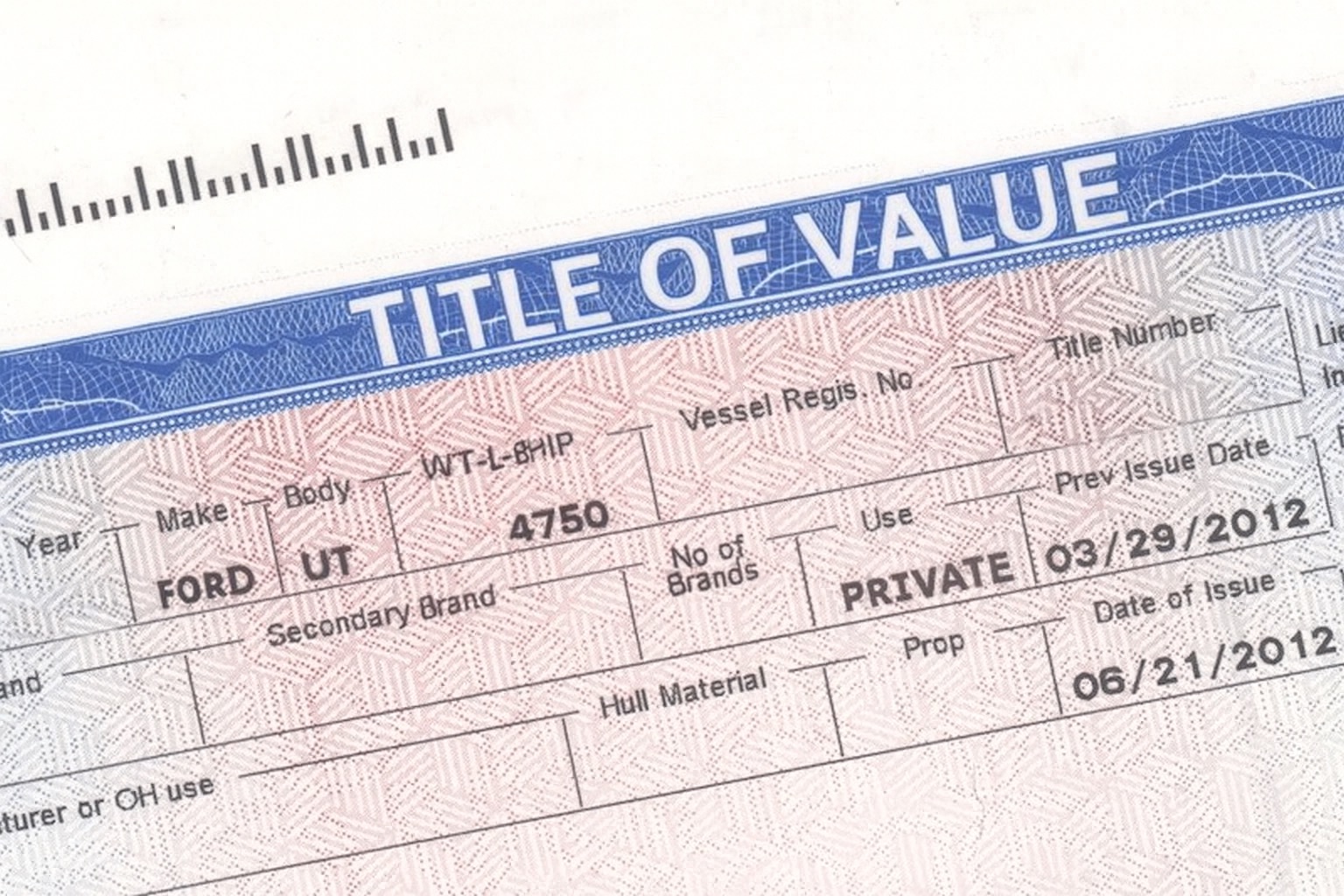
Out-of-State Title Transfer to Ohio: 7 Simple Steps for Dealers (Proven & Easy)
Ohio law gives new residents only 30 days to transfer their out-of-state vehicle titles.
Dealership teams handle this timeline regularly with out-of-state customers moving to Ohio. The title transfer process needs specific documents and a mandatory inspection that lasts 30 days. Ohio’s transfer fee stands at $15, which dealers need to include in customer pricing.
Proper handling of car title paperwork is a vital part of maintaining your dealership’s reputation and keeping customers compliant with state rules. A systematic process helps you save time and avoid errors that can get pricey. This applies to simple DMV vehicle transfers and complex cases alike.
This detailed guide covers everything dealers should know about out-of-state car title transfers in Ohio. We’ve put together a practical checklist that makes the process smoother. It includes required documents, inspection steps, and ways to avoid common issues during Ohio title transfers.
Know the Legal Basics First
Understanding Ohio’s vehicle title regulations is vital for dealers who handle out-of-state transfers. Let’s look at the basics that govern these transactions before we start with the paperwork.
What is a car title and why it matters
A car title proves vehicle ownership in Ohio. This document works like a real estate deed and establishes legal rights to the vehicle. The Ohio Revised Code Chapter 4505 defines a certificate of title as the main proof of ownership for motor vehicles that protects buyers and sellers during transfers.
Ohio accepts both physical and electronic titles. An electronic certificate of title is a record stored in the automated title processing system that establishes ownership and any security interests on a vehicle. You should never alter or erase anything on a title. These changes will void the document right away and you’ll need to get a replacement title.
Ohio’s 30-day rule for out-of-state transfers
Ohio law requires that you transfer out-of-state titles within 30 days of:
- The vehicle purchase date
- The assignment date on the title
- Establishing residency in Ohio for new residents
Missing this deadline means paying a $5.00 late fee on top of standard transfer costs. The inspection forms for out-of-state vehicles expire after 30 days from the inspection date. So quick processing matters for both compliance and customer satisfaction.
Who is responsible for filing: dealer vs. buyer
The responsibility varies based on transaction type, but dealers usually handle the paperwork for their customers. Ohio law requires dealerships to provide titles for all off-highway motorcycles and all-purpose vehicles within 30 days of purchase.
In private sales, the seller must complete the ownership assignment section on the title certificate with a notary public or deputy clerk present. The buyer then takes this assigned title to any Ohio Clerk of Courts Title office with required documentation and fees.
Note that Ohio law doesn’t allow anyone to sell a motor vehicle without giving a properly assigned certificate of title to the buyer. It also requires everyone to get a certificate of title in their name when they acquire a vehicle. *Dealers, set up your DEMO now with EZ ETitle.
Gather the Right Documents
Dealers handling out-of-state title transfers in Ohio need the right paperwork. Well-organized documentation helps avoid delays and meets state requirements.
Out-of-state title and VIN inspection
The original out-of-state title certificate stands as the foundation for any transfer – photocopies won’t work. All vehicles with previous titles from another state need an out-of-state VIN inspection. This inspection checks the vehicle’s identification number, description, and current mileage.
The inspection form stays valid for just 30 days. Customers can get this inspection at any Ohio deputy registrar license agency, participating Clerk of Courts Title Office, or an Ohio licensed dealership. The cost runs $3.50, plus a $1.50 fee paid to the clerk of court when they issue the title.
Proof of identity and address
Ohio’s identity verification needs five essential elements: full legal name, date of birth, proof of U.S. legal presence, Social Security Number, and proof of Ohio residency. Customers must provide two documents from different sources on Ohio’s acceptable document list to establish residency.
Both parties must show up at the title office for joint ownership cases unless they have a notarized power of attorney. The Social Security Numbers must appear on the title for all listed parties.
Lien release or permission letter
Customers need to provide a lien release letter if the out-of-state title shows a satisfied lien. A permission letter from the lienholder becomes necessary if an active lien exists but the owner’s name has changed or they want to add/remove an owner.
Liens get released electronically for lenders who take part in Ohio’s Electronic Lien and Title Program. Other lenders must mark the lien as discharged right on the physical title.
Odometer disclosure and bill of sale
Federal and Ohio laws require an odometer disclosure statement for vehicles under 10 years old. This statement helps prevent fraud by recording accurate mileage. Customers should use the Odometer Disclosure Statement (Form BMV 3724).
A bill of sale can prove useful even though it’s not always required. This document shows the purchase price, buyer’s name, and sale date. It helps resolve any disputes about the selling price or transaction terms later.
Complete the Title Transfer Process

Image Source: EZ ETitle
You need to submit your application correctly after collecting all the required documents. Here’s what you need to do next:
Filling out the Application for Certificate of Title
Start by completing the Application for Certificate of Title (BMV 3774) with the right information. A notary must witness all signatures on the form. The BMV 3770 form works like the back of a physical title for electronic titles, which lets sellers transfer ownership without getting a physical title. All owners must sign the assignment section with a notary present.
Where to submit forms and pay fees
Only County Clerk of Courts title offices in Ohio can issue titles, not the BMV. A standard title certificate costs $15.00. You might need to pay extra fees:
- Notation of lien: $15.00
- Memorandum title: $5.00
Title offices take cash, certified checks, money orders, and credit cards (Discover, Mastercard, and Visa). They might not accept personal checks.
How to handle leased vehicles
Leased vehicles need the original out-of-state title in the leasing company’s name and their notarized power of attorney. This lets you sign documents on their behalf. The lessor must provide two original powers of attorney – one to get the Ohio title and another for registration and license plates.
Switching to Ohio insurance coverage
Make sure you meet Ohio’s minimum insurance requirements after transferring your title:
- $25,000 for bodily injury/death of one person
- $50,000 for bodily injury/death of two or more people
- $25,000 for property damage
How many OOS deals per month? See your hours saved with EZ E-Title.
Avoid Common Mistakes
Dealers must watch out for common pitfalls that can delay processing or invalidate documents when handling title transfers. Here are the biggest problems dealers face:
Incorrect or missing signatures
Title documents become null and void with any alterations or erasures. All signatures must be notarized and executed in front of a notary public. Ohio transactions with two names on titles require both parties’ signatures. The seller’s signature must match their name exactly as it appears on the original title.
Expired inspection forms
Out-of-state inspection certificates stay valid for only 30 days. You’ll need to get a new inspection after this period to continue with the title transfer. The system charges a $5.00 late fee for title transfers filed more than 30 days after assignment.
Title errors from other states
Check all information on the out-of-state title before submitting paperwork. VIN errors with three or fewer incorrect characters need a notarized Statement of Fact that explains the error and includes photo documentation of the correct VIN. Ohio might reject out-of-state titles with incorrect information until they are fixed.
Notarization issues and how to fix them
Notaries cannot notarize incomplete documents. The buyer and seller must appear in person before the notary. You can get a replacement title at any Clerk of Courts office if there’s a notarization error ($15.00 plus $1.00 notary fee).
Conclusion
Your dealership and customers need protection from legal issues when handling out-of-state title transfers. Ohio’s strict 30-day deadline covers everything from VIN inspections to paperwork submission. Missing these deadlines leads to extra fees and complications that can hurt your business’s reputation.
Title transfers need careful attention to detail. A systematic checklist will streamline how you gather documents, verify information, and complete paperwork. On top of that, it helps to know the common pitfalls that can get pricey – expired inspection forms, signature mistakes, and problems with notarization.
Out-of-state title transfers become straightforward when you break them into manageable steps. Your team should follow a clear protocol that starts with the original out-of-state title and VIN inspection. Next comes proper identification and lien documentation, followed by submitting completed applications to your County Clerk of Courts office.
You must watch signature requirements, notarization standards, and inspection timelines closely. Without doubt, dealers who become skilled at these procedures have an edge with faster processing and happier customers.
Note that your dealership guides customers through this complex process. Building expertise in out-of-state title transfers ensures legal compliance and builds trust with customers who depend on your knowledge as they move to Ohio.
*EZ E-Title presents: EZ INTERSTATE arrives this fall—bringing Out-of-State Title Transfer directly into your existing setup with clerk-ready packets, guided checklists, and real-time compliance.
Book a Demo and be first in line.
Key Takeaways
Ohio dealers must navigate strict timelines and specific requirements when handling out-of-state title transfers for customers.
• 30-day deadline is non-negotiable: Ohio law requires title transfers within 30 days of purchase or residency establishment, with $5 late fees for missed deadlines.
• VIN inspection expires quickly: Out-of-state vehicles need mandatory VIN inspections that remain valid for only 30 days, costing $3.50 plus processing fees.
• Original documents only: Accept only original out-of-state titles with proper notarized signatures – photocopies are never accepted and alterations void the document.
• Systematic documentation prevents delays: Gather proof of identity, lien releases, odometer disclosures, and insurance coverage before submitting to County Clerk offices.
• Common mistakes cost time and money: Signature errors, expired inspections, and improper notarization create processing delays that damage dealership reputation.
Mastering these requirements gives dealers a competitive advantage through faster processing times, legal compliance, and enhanced customer satisfaction during the complex transition to Ohio vehicle ownership.
Out-of-State Title Transfer — FAQs
Q1. What documents are required for an Out-of-State Title Transfer in Ohio?
For an Out-of-State Title Transfer, bring the original out-of-state title, completed Ohio VIN inspection, valid ID and Ohio address proof, and payment for title fees. If applicable, include a lien release or lienholder authorization and an odometer disclosure (vehicles under 10 years). Having this full packet prevents Out-of-State Title Transfer delays.
Q2. How long do I have to complete an Out-of-State Title Transfer in Ohio?
Ohio requires an Out-of-State Title Transfer within 30 days of purchase, title assignment, or establishing residency. Miss the window and a $5 late fee applies in addition to standard costs—so plan your Out-of-State Title Transfer as soon as your paperwork is ready.
Q3. Where can I get the VIN inspection for an Out-of-State Title Transfer?
You can complete the VIN inspection required for an Out-of-State Title Transfer at any Ohio deputy registrar license agency, many Clerk of Courts Title Offices, or an Ohio-licensed dealership. The inspection costs $3.50, plus a $1.50 clerk fee when issuing the title. The form is valid for 30 days, so time your Out-of-State Title Transfer accordingly.
Q4. Do I owe Ohio sales tax during an Out-of-State Title Transfer?
If the vehicle will be titled and used in Ohio, sales tax is typically collected at the Out-of-State Title Transfer. Non-residents usually don’t owe Ohio tax when they’ll title in their home state, but Ohio residents should expect tax as part of the Out-of-State Title Transfer process.
Q5. Can a dealership handle the Out-of-State Title Transfer for me?
Yes. Ohio dealerships routinely handle the Out-of-State Title Transfer for retail purchases—submitting documents to the County Clerk of Courts and ensuring compliance. Even so, understanding the steps helps you spot missing paperwork early and keep your Out-of-State Title Transfer moving.
Q6. Is there an easier way to manage an Out-of-State Title Transfer in Ohio?
Yes — EZ E-Title’s new EZ INTERSTATE launches this fall. We’re integrating Out-of-State Title Transfer workflows directly into your existing EZ E-Title setup, so your team can handle Ohio and interstate deals from the same dashboard. Expect clerk-ready packets, auto-validated forms, VIN-inspection tracking with 30-day reminders, real-time compliance checks, and a full audit trail. Role-based permissions, DMS-friendly exports, and guided checklists keep every step clean, fast, and consistent—so your dealership processes more titles with fewer rejections.
Want early access? Book a 15-minute walkthrough now

